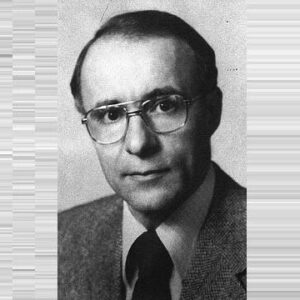American physicist and radio astronomer Arno Allan Penzias shared the 1978 Nobel Prize in Physics. He was one of the people who found cosmic microwave background radiation, which helped the Big Bang theory of cosmology become accepted. In the early 1930s, he was born into a Jewish family in Germany. He grew up during a time when there was a lot of political turmoil in the country. As a child, he was taken to Britain as part of a rescue mission right before World War II started. He was reunited with his family, who then moved to the United States. His parents worked hard to get their lives back on track, and soon they were living comfortably in the middle class. Since he was young, he was interested in science. After high school, he went to the City College of New York and got a degree in physics. After two years as a radar officer in the U.S. Army Signal Corps, he got his doctorate and went to work at Bell Labs in Holmdel, New Jersey, where he started experimenting with ultra-sensitive cryogenic microwave receivers. Astronomers were able to prove the Big Bang theory with the help of their research and findings.
Early years and childhood
Arno Allan Penzias was born on April 26, 1933, to a middle-class Jewish family in Munich, Germany. When he was a little boy, his happy childhood was shattered when his family was taken away and sent to Poland.
In 1939, he and his younger brother were sent to England as part of a plan to save Jewish children. The boys’ parents joined them soon after, and in 1940, the whole family moved to New York City.
He went to and graduated from Brooklyn Technical High School in 1951. Then he went to City College of New York to study chemistry, but he switched majors and got a degree in physics instead.
After he graduated, Penzias worked for the U.S. Army Signal Corps for two years as a radar officer. His time in the army helped him get a job as a research assistant at Columbia University’s Radiation Laboratory, which at the time did a lot of work in microwave physics.
He started working on his thesis with Charles Townes, who later came up with the maser. In 1962, he got his Ph.D. in physics.
Arno Allan’s Career
He got a job at Bell Labs in Holmdel, New Jersey, after getting his Ph.D. Even though he only planned to work there for a short time at first, he ended up staying there for 37 years.
At Bell Labs, he worked with Robert Woodrow Wilson on very sensitive microwave receivers that would be used to study radio astronomy. The two made a very sensitive antenna and receiver system. In 1964, they heard radio noise that they couldn’t figure out.
Radio noise was much less powerful than the radiation that the Milky Way gave off, and it was the same everywhere. After more research didn’t show where the interference was coming from, the two physicists talked to Robert Dicke, an expert in the field of astrophysics.
In the “Astrophysical Journal,” Penzias and Wilson wrote about what they had seen, and Dicke added that they should think of it as the cosmic microwave background radiation (CMB), which is the radio leftover from the Big Bang. Astronomers were able to confirm the Big Bang and clear up many of their previous ideas about it because of what they found.
He took over for A.B. Crawford as head of the Radio Physics Research Department when he retired in 1972. In 1976, he was given the job of Director of the Radio Research Laboratory. This was an organization where many scientists and engineers worked on a wide range of research projects, most of which were about radio and how it could be used for communication.
During the 1970s, he also kept doing his own research in radio astronomy using a millimeter-wave radio telescope that his own group had built. In 1979, he took over the Communications Sciences Research Division at Bell Labs. He also kept studying interstellar isotopes as part of his own research into the effects of nuclear processing in the Galaxy.
In 1981, Bell Labs moved him up to Vice President of Research. In the later years of his career, he started working with the investing staff and portfolio companies of a single venture capital firm, New Enterprise Associates. He is also a venture partner at the firm.
Works of note
Arno Penzias and Robert Wilson found the cosmic microwave background (CMB) by accident. This is the thermal radiation left over from the Big Bang’s time of recombination. Its finding is seen as a big test of the Big Bang model of how the universe began.
Awards & Achievements
In 1975, the American Academy of Arts and Sciences chose him to be a Fellow.
In 1977, the National Academy of Sciences gave the Henry Draper Medal to both Penzias and Wilson.
Arno Allan Penzias and Robert Woodrow Wilson shared one-half of the 1978 Nobel Prize in Physics “for their discovery of cosmic microwave background radiation.”
Pyotr Leonidovich Kapitsa got the other half “for his basic inventions and discoveries in the field of low-temperature physics.”
In 1998, the Industrial Research Institute gave him the IRI Medal for his work.
Personal History and Legacies
In 1954, he married Anne Pearl Barras. There are three kids in the family.
Estimated Net worth
Arno is one of the most popular and wealthiest physicists. Wikipedia, Forbes, and Business Insider all say that Arno Allan Penzias has a net worth of about $1.5 million.


